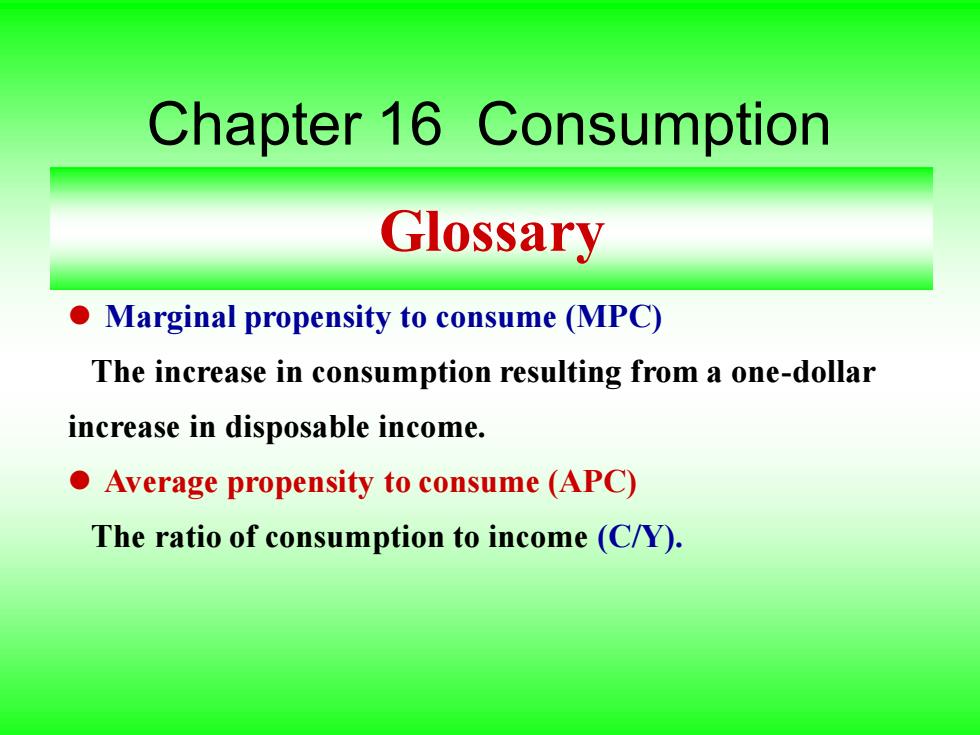
Chapter 16 Consumption Glossary Marginal propensity to consume (MPC) The increase in consumption resulting from a one-dollar increase in disposable income. Average propensity to consume(APC) The ratio of consumption to income (C/Y)
Glossary ⚫ Marginal propensity to consume (MPC) The increase in consumption resulting from a one-dollar increase in disposable income. ⚫ Average propensity to consume (APC) The ratio of consumption to income (C/Y). Chapter 16 Consumption

Intertemporal budget constraint The budget constraint applying to expenditure and income in more than one period of time. ●Discounting(贴现) The reduction in value of future expenditure and receipts, compared to current expenditure and receipts(收入),resulting from the presence()of a positive interest rate
⚫ Intertemporal budget constraint The budget constraint applying to expenditure and income in more than one period of time. ⚫ Discounting(贴现) The reduction in value of future expenditure and receipts, compared to current expenditure and receipts(收入), resulting from the presence(存在) of a positive interest rate

●Indifference curves A graphical representation of preferences that shows different combinations of goods producing(产生,引起)the same level of satisfaction. Marginal rate of substitution (MRS) The rate at which a consumer is willing to give up some of one good in exchange for more of another;the slope of the indifference curve
⚫ Indifference curves A graphical representation of preferences that shows different combinations of goods producing(产生,引起)the same level of satisfaction. ⚫ Marginal rate of substitution (MRS) The rate at which a consumer is willing to give up some of one good in exchange for more of another; the slope of the indifference curve
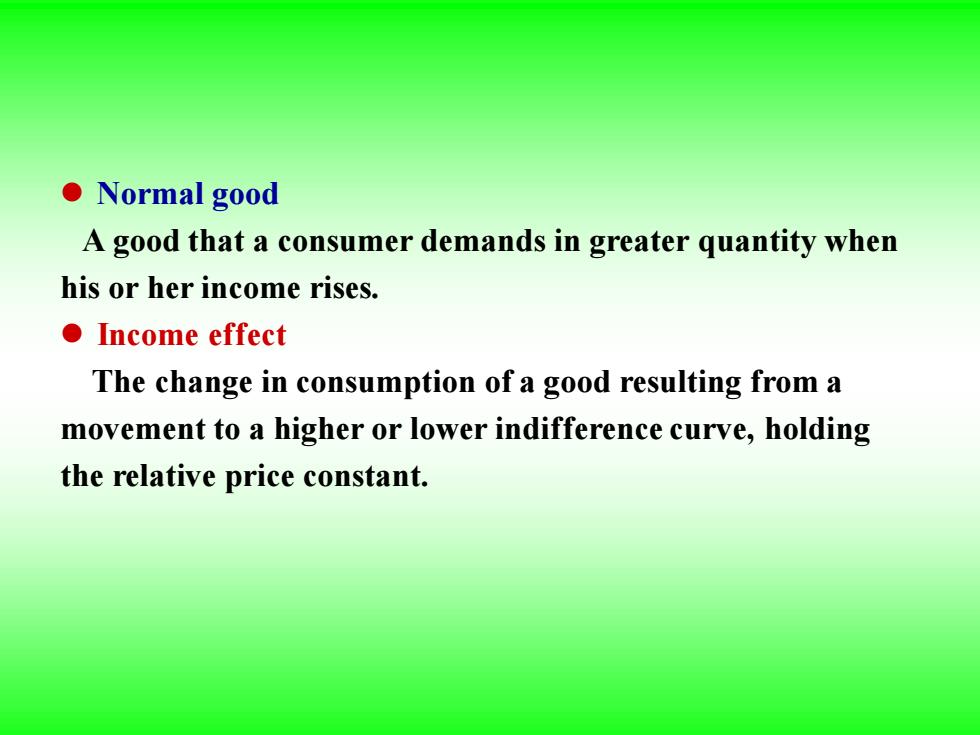
●Normal good A good that a consumer demands in greater quantity when his or her income rises. ●Income effect The change in consumption of a good resulting from a movement to a higher or lower indifference curve,holding the relative price constant
⚫ Normal good A good that a consumer demands in greater quantity when his or her income rises. ⚫ Income effect The change in consumption of a good resulting from a movement to a higher or lower indifference curve, holding the relative price constant
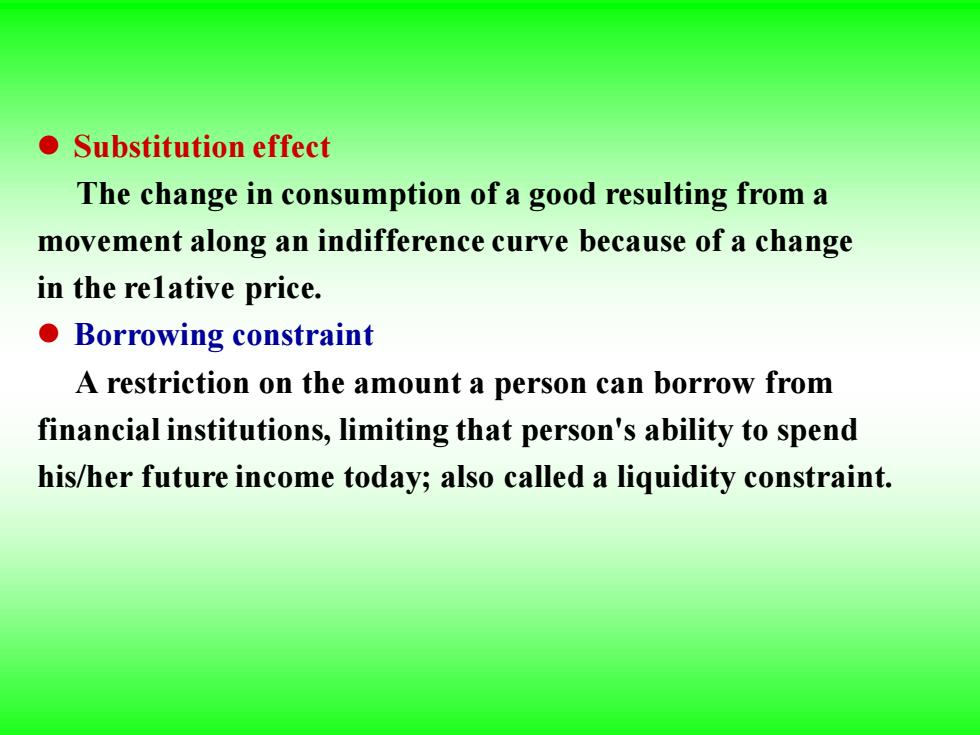
●Substitution effect The change in consumption of a good resulting from a movement along an indifference curve because of a change in the relative price. Borrowing constraint A restriction on the amount a person can borrow from financial institutions,limiting that person's ability to spend his/her future income today;also called a liquidity constraint
⚫ Substitution effect The change in consumption of a good resulting from a movement along an indifference curve because of a change in the re1ative price. ⚫ Borrowing constraint A restriction on the amount a person can borrow from financial institutions, limiting that person's ability to spend his/her future income today; also called a liquidity constraint
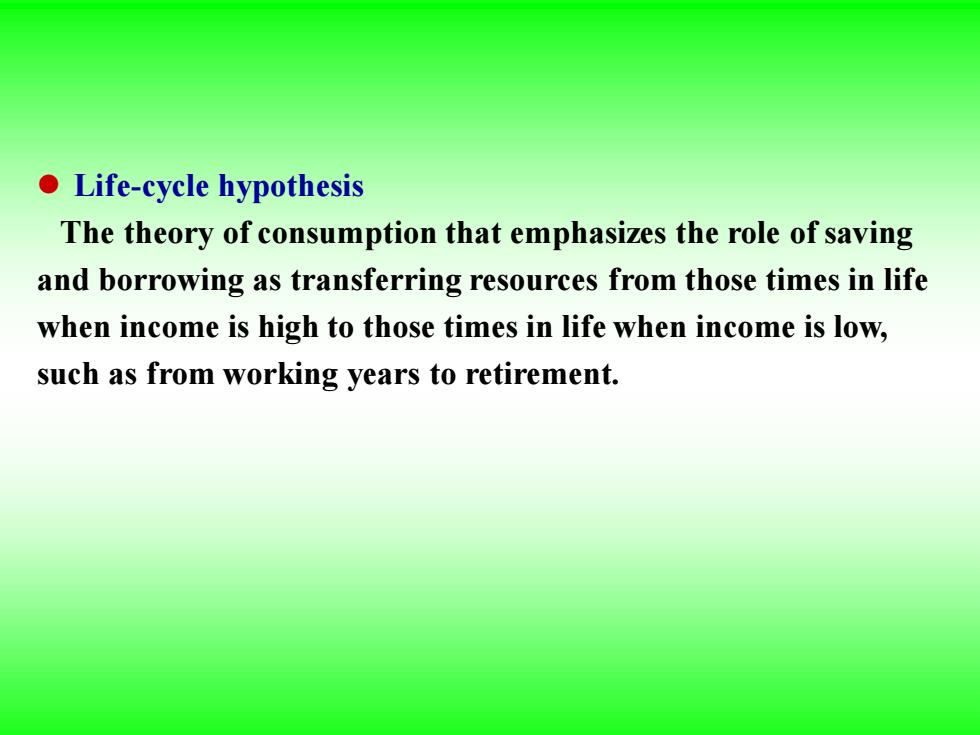
Life-cycle hypothesis The theory of consumption that emphasizes the role of saving and borrowing as transferring resources from those times in life when income is high to those times in life when income is low, such as from working years to retirement
⚫ Life-cycle hypothesis The theory of consumption that emphasizes the role of saving and borrowing as transferring resources from those times in life when income is high to those times in life when income is low, such as from working years to retirement
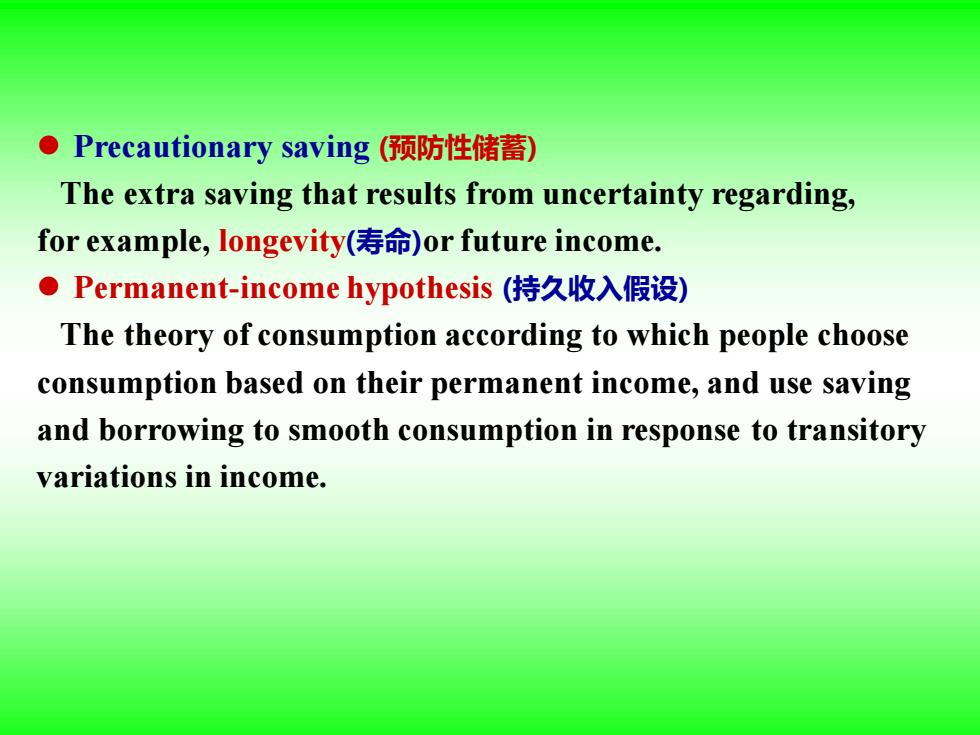
●Precautionary saving(预防性储蓄) The extra saving that results from uncertainty regarding, for example,.longevity(寿命)or future income. ●Permanent-.income hypothesis(特久收入假设) The theory of consumption according to which people choose consumption based on their permanent income,and use saving and borrowing to smooth consumption in response to transitory variations in income
⚫ Precautionary saving (预防性储蓄) The extra saving that results from uncertainty regarding, for example, longevity(寿命)or future income. ⚫ Permanent-income hypothesis (持久收入假设) The theory of consumption according to which people choose consumption based on their permanent income, and use saving and borrowing to smooth consumption in response to transitory variations in income
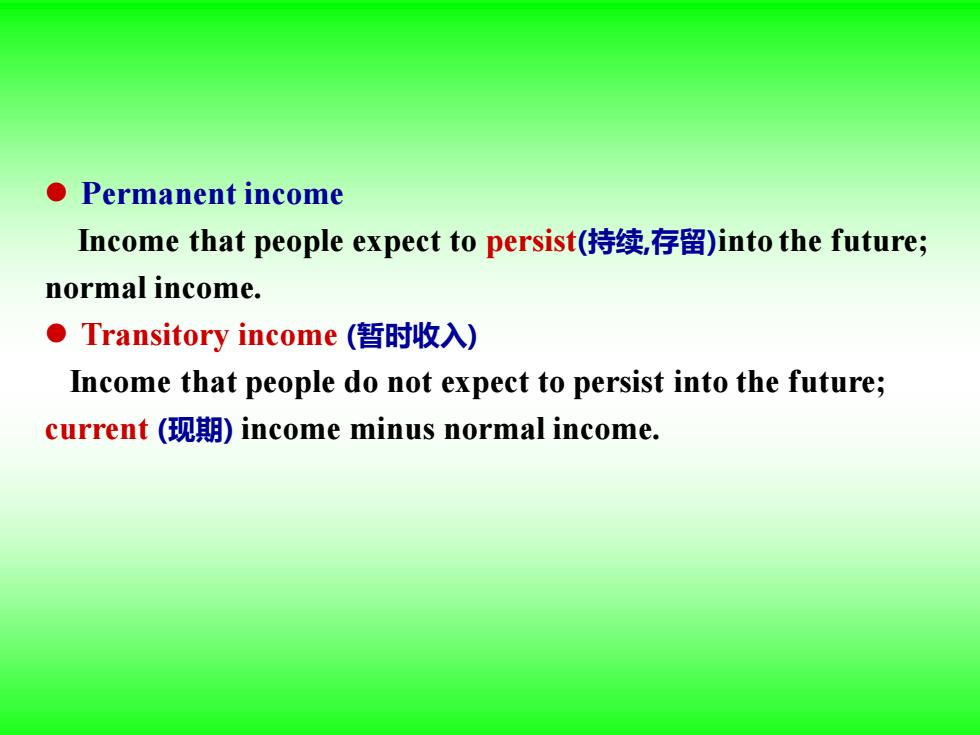
●Permanent income Income that people expect to persist(持续,存留)into the future; normal income. ●Transitory income(暂时收入) Income that people do not expect to persist into the future; current(现期)income minus normal income
⚫ Permanent income Income that people expect to persist(持续,存留)into the future; normal income. ⚫ Transitory income (暂时收入) Income that people do not expect to persist into the future; current (现期) income minus normal income
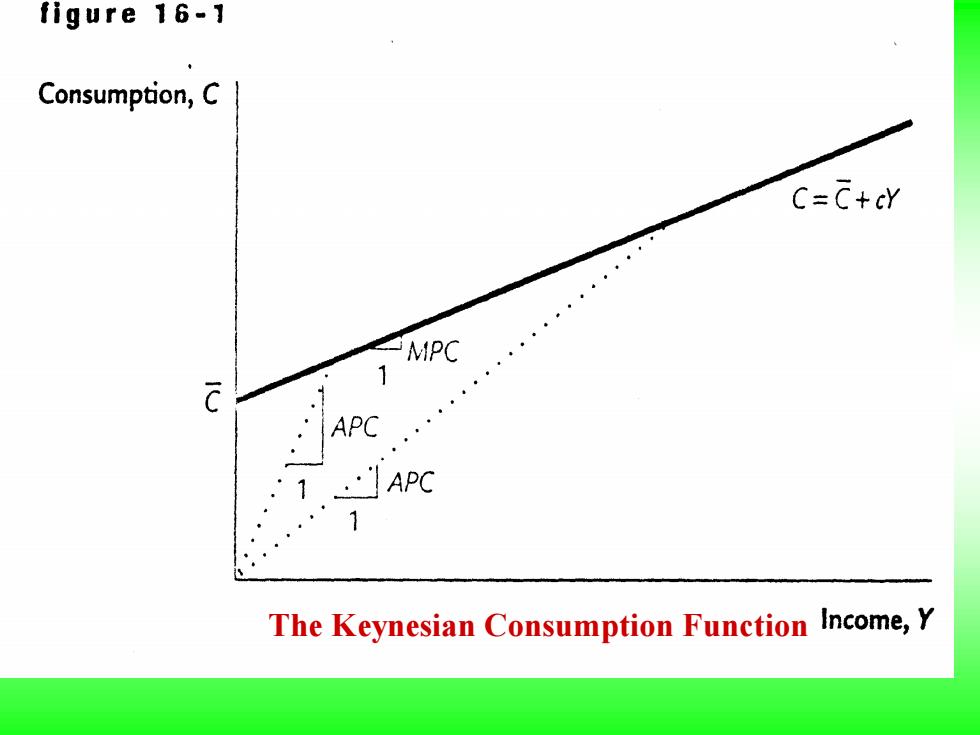
figure 16-1 Consumption,C C=C+cY APC The Keynesian Consumption Function Income,Y
The Keynesian Consumption Function
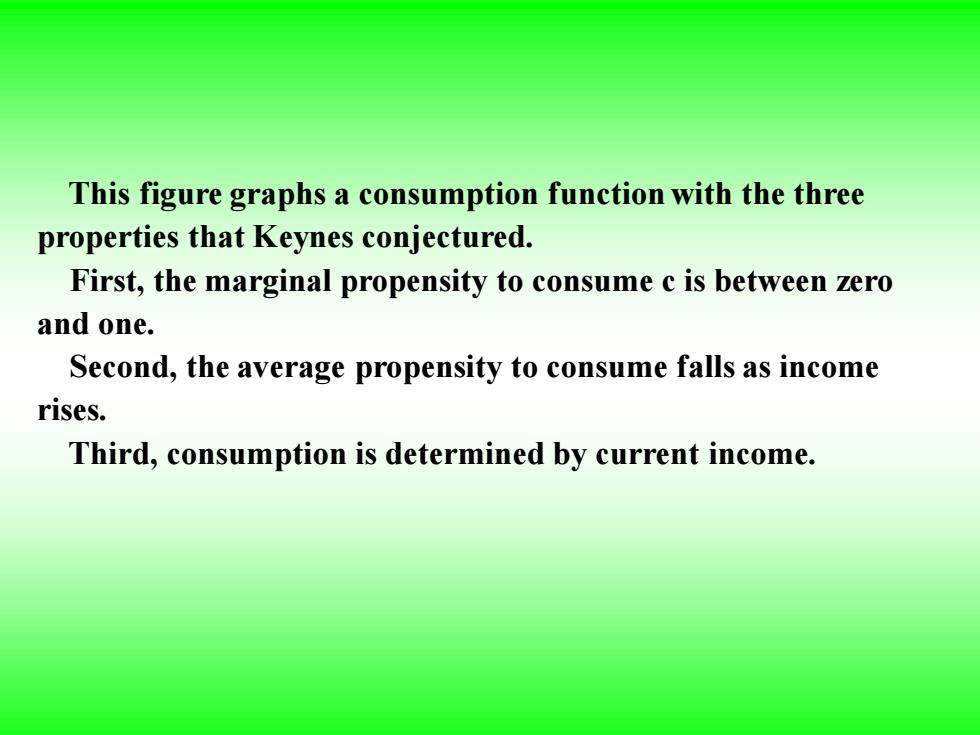
This figure graphs a consumption function with the three properties that Keynes conjectured. First,the marginal propensity to consume c is between zero and one. Second,the average propensity to consume falls as income rises. Third,consumption is determined by current income
This figure graphs a consumption function with the three properties that Keynes conjectured. First, the marginal propensity to consume c is between zero and one. Second, the average propensity to consume falls as income rises. Third, consumption is determined by current income